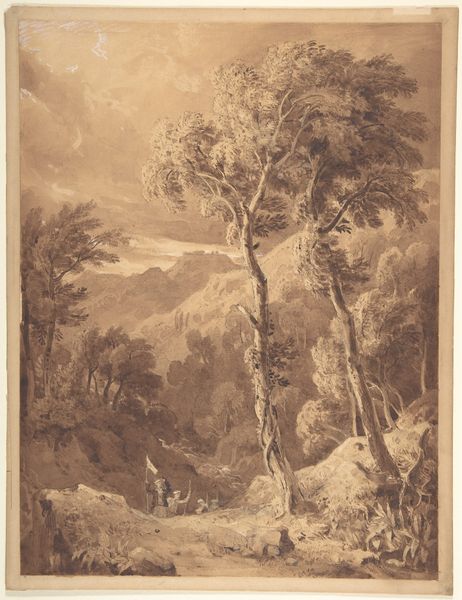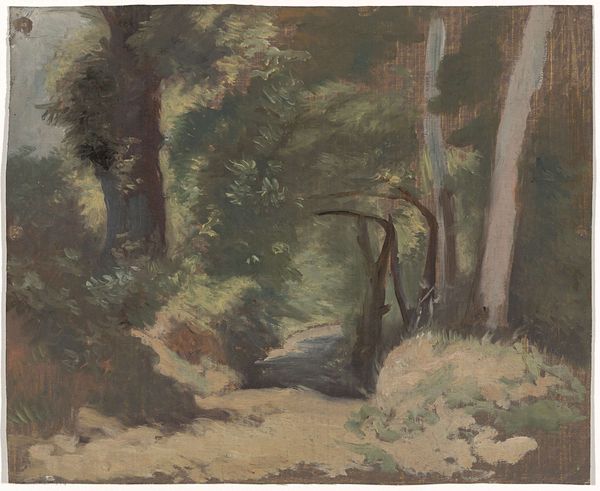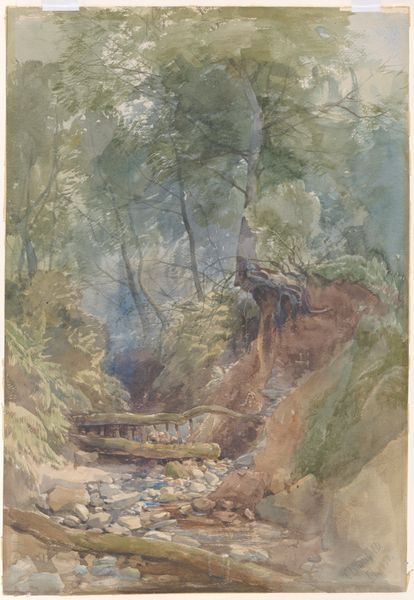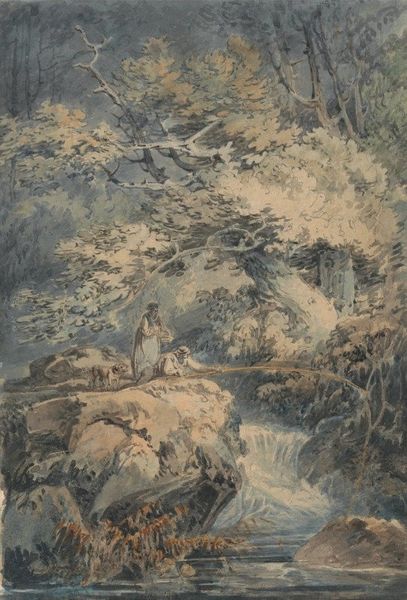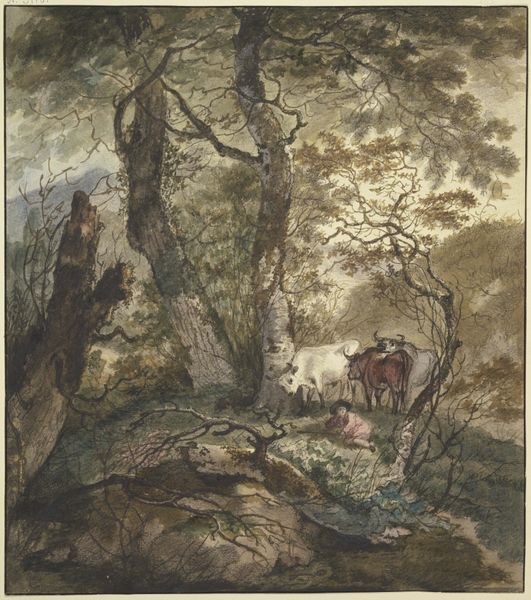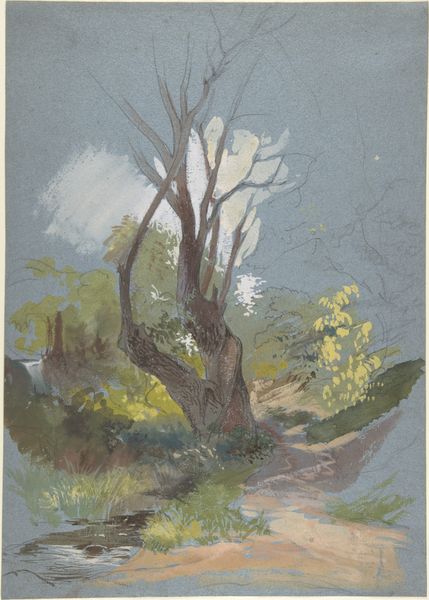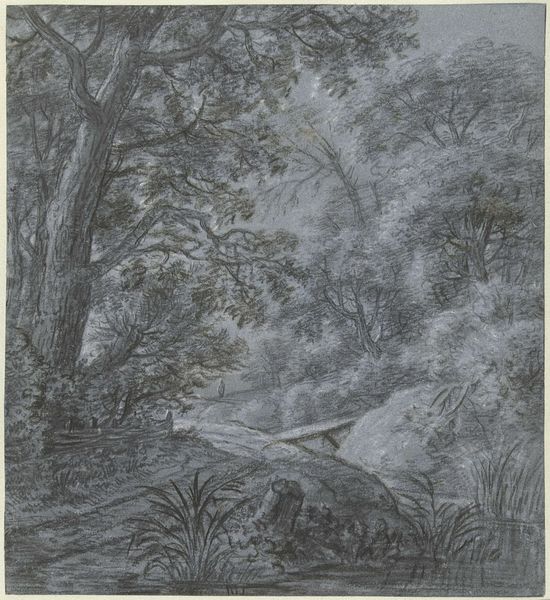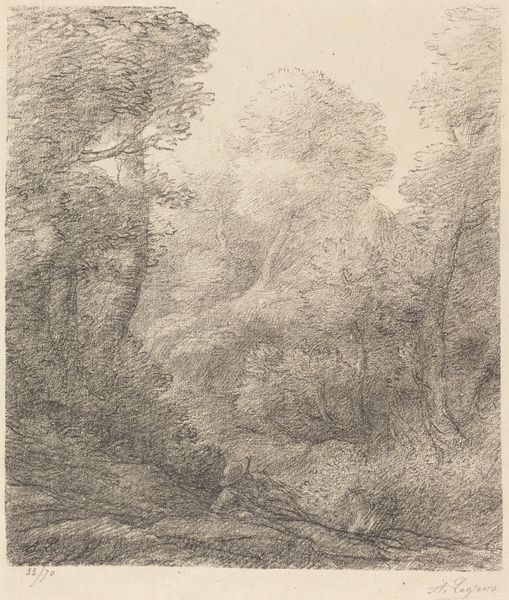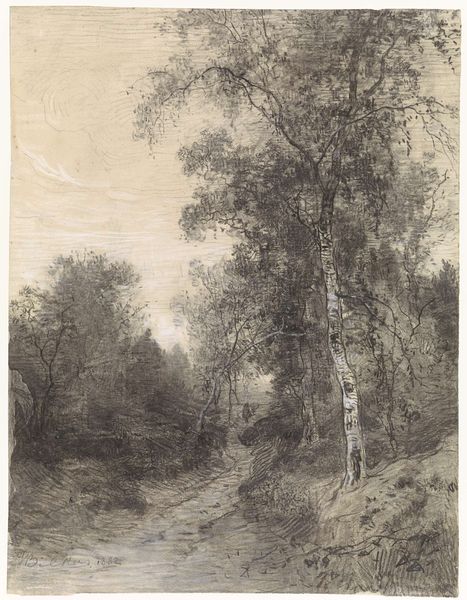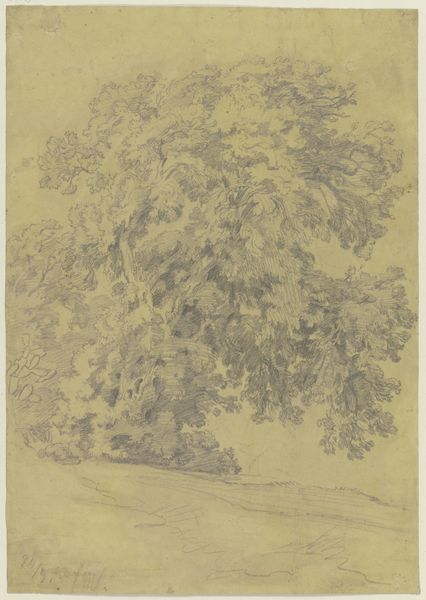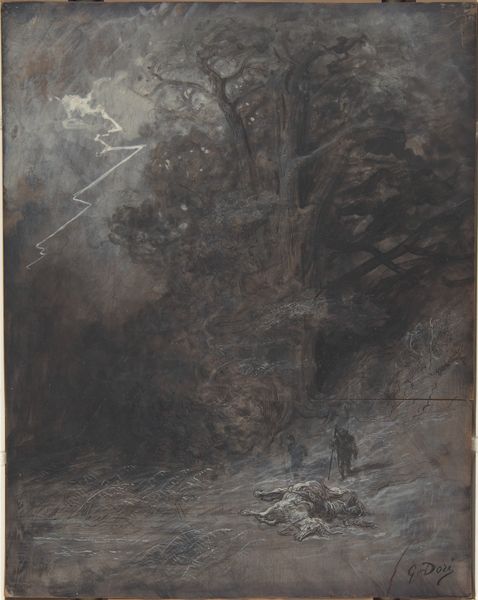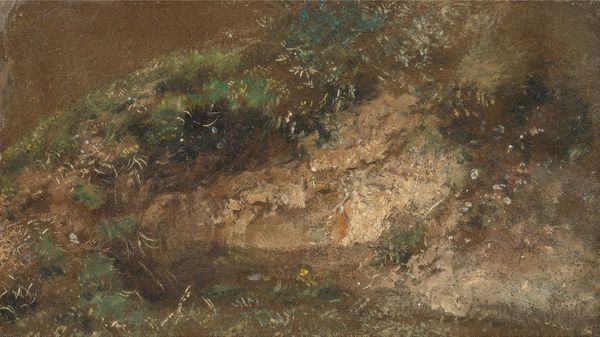
Dimensions: height 338 mm, width 270 mm
Copyright: Rijks Museum: Open Domain
Curator: This watercolor, titled "Duinweg," is by Guillaume Anne van der Brugghen. He likely created it sometime between 1821 and 1891. What's your initial response to it? Editor: It's got this hushed, almost secretive feel, doesn't it? The path seems to be swallowed by the landscape. The coloring is muted. It feels intimate and a little lonely, but also inviting somehow, like an unspoken challenge. Curator: Van der Brugghen was working during a period of shifting ideas about the representation of nature. Dutch Romanticism, although present, saw some departure toward Realism. Do you think this piece aligns to these periods? Editor: Definitely hints of both. It’s less about grand, sweeping vistas and more about this very particular spot. Look how precisely he renders those bushes, but that hazy sky melts everything together so that we get the essence of that area. There's certainly beauty there, which could be viewed as "Romantic." It evokes something—a sense of wanderlust maybe, but also the quiet melancholy that only a landscape painting can conjure. Curator: You're right about that balance. "Duinweg" offers insight into the socio-political context. Land was undergoing ownership change during industrialization and landowners commissioned landscapes like this to affirm holdings. I am wondering if Van der Brugghen was possibly illustrating this for political purposes. Editor: Or maybe it was commissioned by someone who just wanted to remember this view! But I hear you, landscape isn't just pretty pictures, they have societal meaning. The way land is portrayed is very powerful. So many times in history, landscapes paintings showcase wealth. Land ownership. And maybe what we are witnessing is a similar representation. This just hits me in a different, a bit softer way, initially. Maybe it’s the watercolor…the looseness suggests fleeting, immediate impressions more than solid possessions. It is something about a moment, even. Curator: You may be correct. Either way, it presents an interesting tension to resolve for the individual viewer. I always leave feeling very contemplative and aware. Editor: That's a good way to end. This painting lingers. It's not spectacular, but its subtlety gets under your skin, doesn’t it? A humble reminder of the beauty tucked away in overlooked places.
Comments
No comments
Be the first to comment and join the conversation on the ultimate creative platform.


